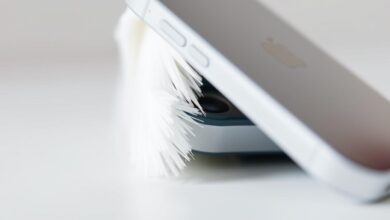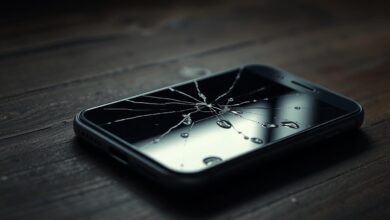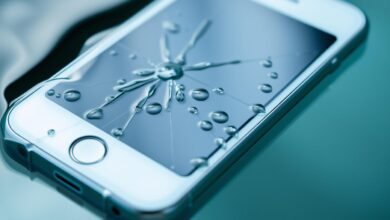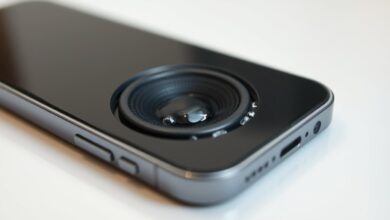how to eject water from phone speaker

I’ve been in a rush to fix my phone after it got wet. Water in your phone’s speaker can really mess things up. It can ruin your sound quality and even cause bigger problems.
Removing water from your phone’s speaker is crucial to avoid lasting damage. In this article, I’ll show you how to safely get water out of your phone’s speaker.
By using the steps I’ll share, you might save your phone from harm. These methods are easy to do at home.
Key Takeaways
- Understand the importance of removing water from your phone’s speaker
- Learn simple techniques to eject water from your phone speaker
- Discover steps to prevent long-term damage to your device
- Find out how to safely remove water from your phone
- Understand the potential consequences of not removing water from your phone’s speaker
Understanding Water Damage in Phone Speakers
Phone speakers can get damaged by water, leading to issues like muffled sound or complete failure. Water can get into the speaker grills and harm the inside parts. This can cause various audio problems.
How Water Affects Speaker Functionality
Water can harm the diaphragm, voice coil, or other key parts of the speaker. This damage might make the sound distorted, lower the volume, or even stop the speaker from working. Water messes with the speaker’s mechanical parts, making them not work right.
Key effects of water on speaker functionality:
- Distortion in sound output
- Reduced speaker volume
- Complete failure of the speaker
Signs of Water in Your Phone Speaker
Spotting water damage in your phone speaker is key to fixing it fast. Look out for signs like distorted or muffled sound, crackling noises, or a big drop in volume. If you see these signs, act quickly to lessen the damage.
- Muffled or distorted sound
- Crackling or buzzing noises
- Reduced speaker volume
Knowing how water harms phone speakers and spotting damage signs helps you fix the problem.
Act Fast: Immediate Steps After Water Exposure
When your phone gets wet, time is of the essence. The quick actions you take can greatly affect how much damage your phone’s speaker suffers.
Turn Off Your Phone Immediately
The first thing to do is to turn off your phone right away. This stops short circuits that could harm your phone more. It’s key to protect your phone’s inside parts from damage.
Remove Case and External Components
Then, take off any cases or outside parts like SIM cards, SD cards, and headphones. This makes drying easier and lowers the chance of water getting inside your phone. For more help, check out wikihow’s guide on saving a wet cell.
Dry the Exterior Thoroughly
Use a soft cloth to gently dry your phone’s outside. Focus on the speaker grills and any openings. Don’t use heat or rub hard, as it can cause more harm.
By taking these quick steps, you can greatly increase the chances of fixing your phone’s speaker. This way, you can get your phone working again.
How to Eject Water from Phone Speaker Using Sound Waves
Water stuck in your phone speaker? Sound waves can help get it out. This method is simple and works well to remove water without harming your device.
The Science Behind Sound-Based Water Ejection
Sound waves can push water out of phone speakers by vibrating it. A low-frequency tone vibrates the water, helping it move out. Research has shown that certain sounds can remove water from tight spaces, making it a good fix for water-damaged speakers.
“Sound waves can clean electronic devices by dislodging particles or liquids,” an expert notes.
Using Low-Frequency Tones
To use sound waves, you need a tone generator or an app for low sounds. Frequencies between 20 Hz to 200 Hz work best. Start with 50 Hz to begin the process. Remember, keep the volume low to avoid speaker damage.
Optimal Volume Settings for Water Ejection
Volume is key when using sound waves. Start with a moderate level and increase if needed. High volumes can harm your speaker. Aim for a volume where you can talk nearby without straining.
Adjusting frequency and volume correctly can remove water from your phone’s speaker. This might fix the issue without needing a professional.
Using Dedicated Water Eject Apps
After your phone gets wet, using water eject apps can help fix the speaker. These apps send sound waves to push water out of the speaker. This might save your phone from getting damaged.
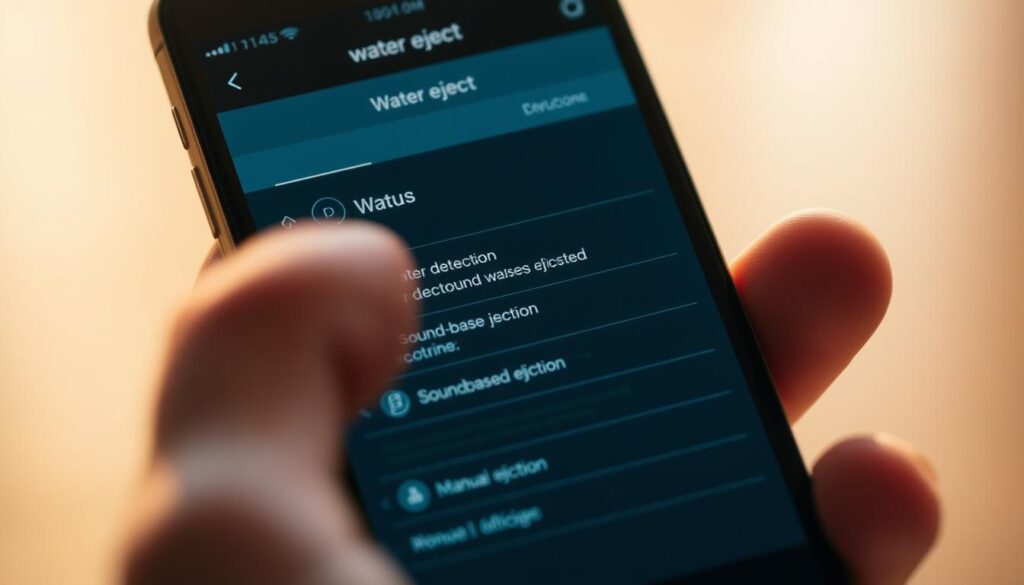
There are many apps for both Android and iOS. Each app has its own special features. Let’s look at some of the best ones.
Top Water Eject Apps for Android
Android users can find many water eject apps on the Google Play Store. Sound Fix is well-liked for its sound waves that push out water. Water Eject is easy to use, even when your phone is wet.
These apps let you adjust the sound and volume. This helps you tailor the water ejection to your needs.
Water Eject Solutions for iPhone
iPhone users can find water eject apps in the App Store. Water Eject – Speaker Water Remove uses sound waves to clear water. Speaker Cleaner does the same and also checks if the speaker works after.
These apps can work well. But, it’s key to follow the app’s directions and keep the volume right to avoid harm.
Utilizing Built-in Water Ejection Features
Many modern smartphones have built-in water ejection features. These aim to keep your device’s speakers dry by pushing out moisture. Knowing how to use these features is key to keeping your phone working after it gets wet.
iPhone’s Water Eject Shortcut
iPhone users can use the Water Eject shortcut. It uses the phone’s speaker to push out water. To start, download the Water Eject shortcut from the Shortcuts app gallery.
After installing, it plays a sound that helps remove water from the speaker grills. A user said, “The Water Eject shortcut saved my iPhone from water damage after it fell in the pool.”
“The Water Eject shortcut is a lifesaver. I was about to panic after my iPhone got wet, but this feature helped me get it working again.”
Samsung and Other Android Manufacturers’ Solutions
Samsung and other Android makers have their own ways to deal with water in speakers. Samsung devices often have a built-in feature in their support or device care apps. This feature plays a sound to push water out of the speakers.
Users should look in their device’s manual or on the support website for how to use these features. Remember, these features work best when used with other drying methods. It’s important to act fast to prevent damage.
Manual Methods to Remove Water from Phone Speakers
Manual techniques can help get water out of your phone’s speakers. When water gets into your phone’s speaker, it’s hard to remove it without harming it. But, there are a few ways to do it safely.
The Gravity Method
The gravity method uses gravity to help drain water from your phone’s speaker. To do this, turn your phone upside down and gently tap it. This can help push out the water. But, be careful not to tap too hard, as it could damage your phone.
Using Compressed Air Safely
Compressed air can also help remove water from your phone’s speakers. But, you have to use it carefully. Hold the can upright to keep liquids out. Spray the air in short bursts from a distance, moving around the speaker area. Don’t spray too closely or with too much force, as it could harm the speaker.
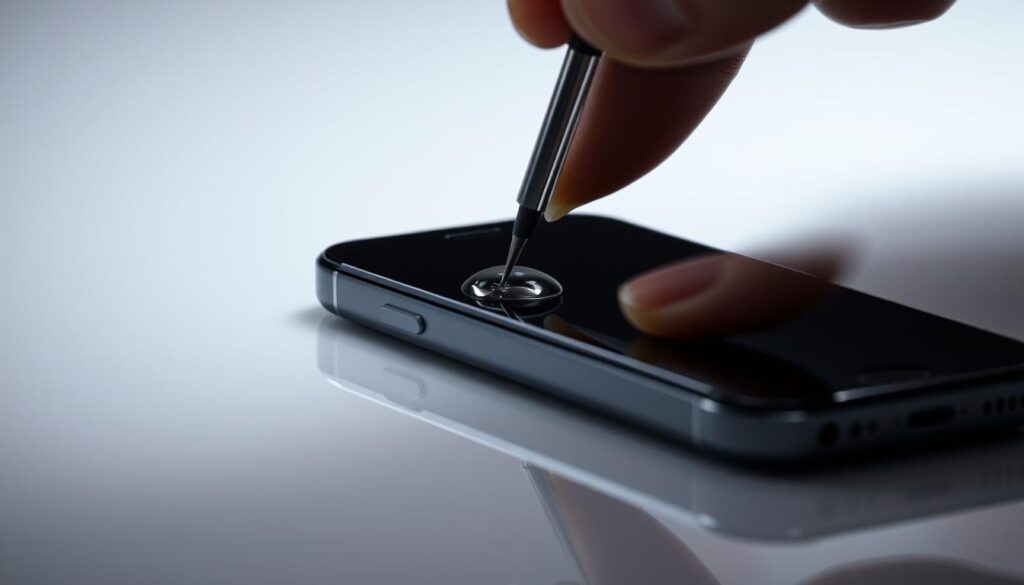
Gentle Tapping Techniques
Gentle tapping can also help get water out of your phone’s speaker. Gently tap your phone on a soft surface with the speaker facing downwards. This can help push out the water. But, be gentle to avoid damaging your phone’s inside parts.
| Method | Description | Precautions |
|---|---|---|
| The Gravity Method | Position phone upside down to drain water | Avoid tapping too hard |
| Using Compressed Air | Spray compressed air in short bursts | Hold can upright, avoid close proximity |
| Gentle Tapping | Tap phone gently on a soft surface | Be gentle to avoid internal damage |
Drying Agents and Absorbent Materials
Drying agents and absorbent materials are key to saving a phone’s speaker after water damage. Water in a phone’s speaker can cause serious harm if not fixed fast. The right drying agents can help lessen this damage and get the speaker working again.
Silica Gel Packets
Silica gel packets are great at pulling moisture from the air and other materials. You often find them in packaging for electronics and other items that can’t handle moisture. To dry a water-damaged phone speaker, put the device in a container with several silica gel packets. The packets will soak up the moisture, helping to dry the speaker. Make sure to use enough packets to absorb all the moisture.
Uncooked Rice: Myth vs. Reality
Uncooked rice has been suggested as a DIY fix for drying out water-damaged electronics. But, its effectiveness is up for debate. Rice can soak up some moisture, but it’s not the best choice. The starch and dust from the rice could harm your phone’s inside parts. For drying a phone speaker, it’s better to use a safer and more effective drying agent.
Commercial Drying Solutions
There are many commercial drying solutions made for drying out water-damaged electronics. These products are usually desiccant packets or drying containers. They are made to soak up moisture fast and efficiently, making them a good choice for drying a phone speaker. When picking a commercial drying solution, choose ones made for electronics and follow the instructions.
What Not to Do When Removing Water from Speakers
When your phone gets wet, it’s crucial to handle it carefully to avoid more harm. It’s important to act fast, but also to avoid actions that could make things worse.
Avoid Heat Sources
Many people make the mistake of using heat to dry their phone’s speaker. Don’t use hair dryers, heaters, or microwaves. Heat can damage the phone’s internal parts, causing permanent harm. Let your phone dry naturally instead.
Don’t Use Cotton Swabs or Paper Towels
Another mistake is using cotton swabs or paper towels in the speaker grills. They might seem like a good idea to soak up water, but they can push debris in or harm the speaker. This can lower sound quality or even break the speaker. It’s best to keep your phone’s speaker free from foreign objects.
Never Shake Your Phone Vigorously
Don’t shake your phone hard to try to get water out of the speaker. This can push water into other parts of the phone, causing damage. When dealing with a wet phone, it’s important to be gentle.
| Common Mistakes | Potential Damage | Recommended Action |
|---|---|---|
| Using heat sources to dry the phone | Damage to internal components, warping, or melting of electronics | Let the phone air dry naturally |
| Inserting cotton swabs or paper towels into speaker grills | Pushing debris further in, damaging the speaker’s mesh | Avoid inserting foreign objects into the speaker |
| Shaking the phone vigorously | Water moving further into internal components, damaging other parts | Handle the phone gently |
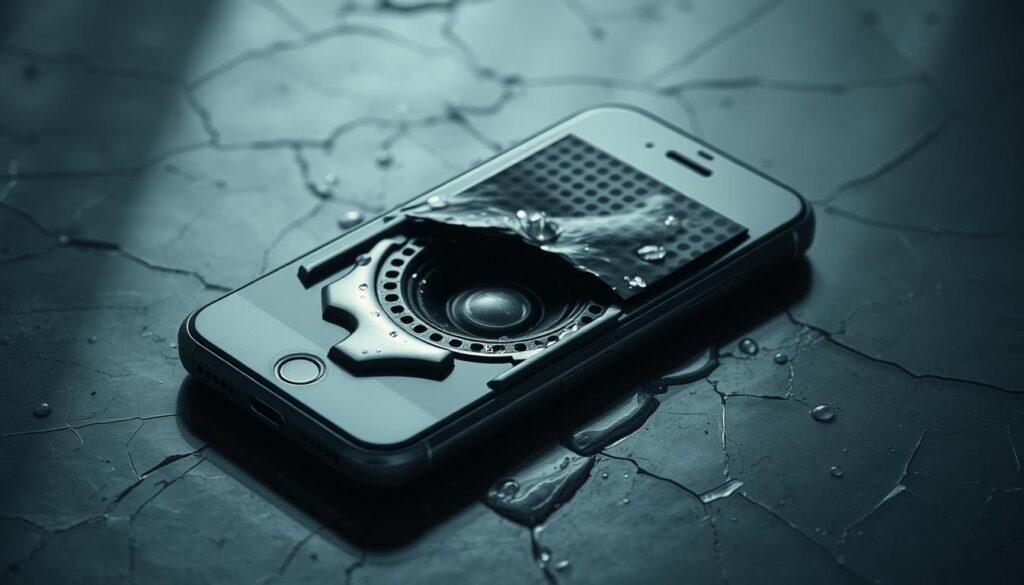
By avoiding these common mistakes, you can greatly improve your chances of fixing your phone’s speaker without causing more damage. Remember, be gentle and patient, letting your phone dry naturally.
Testing Your Speaker After Water Removal
Testing your phone speaker after water removal is key to making sure it works. After trying to get water out of your phone speaker, you need to check if it’s working right. This is important to see if your efforts were successful.
There are several tests to do to check sound quality, volume, and clarity. This is vital because water damage can be hidden. Even if your phone seems to work right away, it might not last.
Sound Quality Assessment
To check sound quality, play different kinds of audio like music and voice recordings. Listen for any distortion or muffled sound. If the sound is clear and sharp, it means the water was likely removed.
- Play different types of audio files.
- Check for distortion or muffled sound.
- Compare the sound quality before and after water exposure.
Volume and Clarity Tests
Testing volume means playing audio at various levels to see if the speaker works well at all volumes. Make sure the sound stays clear whether you turn it up or down.
- Play audio at low volume and check for clarity.
- Increase the volume to maximum and assess the sound quality.
- Repeat the process several times to ensure consistency.
Troubleshooting Persistent Water Damage
When water damage keeps happening in your phone’s speaker, you need to try more things. This damage can show up as muffled sound, distortion, or even when the speaker stops working.
Dealing with Muffled Sound
If your phone’s speaker sounds muffled after getting wet, it might mean water is still inside. Try doing the water ejection trick again or use a different sound to get rid of the water. Be patient and gentle to avoid making things worse.
Addressing Speaker Distortion
Distortion after water damage could mean water is messing with the speaker’s parts. Try drying it more or use sound to push out the water with a different tone or volume. It’s important to check how the speaker sounds after each try to see if it’s working.
Multiple Ejection Attempts
One try might not be enough to fix the problem. You might need to do it again or try something else. Using drying agents or desiccants can also help soak up the moisture.
| Troubleshooting Step | Description | Expected Outcome |
|---|---|---|
| Repeat Water Ejection | Use sound waves or other ejection methods again | Removal of remaining water |
| Use Drying Agents | Place phone near silica gel or uncooked rice | Absorption of moisture |
| Check Speaker Performance | Test speaker after each troubleshooting step | Assessment of speaker functionality |
By trying different methods and checking each step, you might be able to fix phone speaker water damage. This could help get your phone’s sound working again.
Water Resistance Ratings Explained
Understanding water resistance ratings is key to protecting your phone from water damage. Many people need this feature, especially if they work or spend time near water. But what do these ratings really mean?
The IP (Ingress Protection) rating is the most common way to measure a phone’s water resistance. This system shows how well a phone can keep out dirt and water.
Understanding IP Ratings
IP ratings have two numbers. The first digit shows how well the phone protects against solid particles. The second digit shows its protection against liquids. For example, an IP68 rating means the phone is very protected against dust and water.
The highest water resistance rating is 8. This means the phone can handle being underwater at a depth of over 1 meter.
| IP Rating | Protection Against Solids | Protection Against Liquids |
|---|---|---|
| IP67 | Dust resistant | Immersion up to 1 meter |
| IP68 | Dust resistant | Immersion beyond 1 meter |
Water Resistance vs. Waterproof: What’s the Difference
Water resistance and waterproof are not the same. Water-resistant phones can handle some water exposure but are not completely waterproof. The level of protection depends on the IP rating and the water conditions.
Water-resistant phones can handle accidental splashes or short submersions. But, they can still get damaged by too much water or water pressure. So, even with a high IP rating, it’s best to avoid too much water to keep your phone working well.
Preventing Future Water Damage
To keep your phone safe from water damage, you need the right gear and careful habits. Taking steps ahead of time can greatly lower the chance of water harming your device.
Waterproof Cases and Accessories
Using waterproof phone cases and accessories is a smart move. They act as a shield between your phone and water, stopping damage. When picking a waterproof case, make sure it fits well and has a high IP rating.
- Choose cases with high IP ratings for better protection.
- Consider brands that specialize in waterproofing solutions.
- Ensure the case is compatible with your phone model.
Situational Awareness Around Water
Being careful around water is important. This means being watchful near pools, beaches, or in the rain. Simple steps, like keeping your phone away from water’s edge or using a waterproof pouch, can help a lot.
“A moment of caution can save you from the distress of water damage.”
Regular Maintenance Tips
Keeping your phone in good shape is crucial. Check your phone’s seals, clean ports, and update your software often. This helps your phone stay healthy and water-resistant.
When to Seek Professional Help
Dealing with water damage on your phone can be tough. Sometimes, you can’t fix it yourself, no matter how hard you try. That’s when it’s time to call in a pro.
Water damage might not show up right away. But if you’ve tried everything to get sound back and nothing works, it’s time for professional repair.
Signs of Serious Water Damage
Knowing when damage is too much to handle is key. Look out for these signs:
- Persistent muffled sound or complete loss of sound
- Visible corrosion on the internal components
- Phone not turning on or frequent shutdowns
If you see any of these, it’s likely your phone needs professional repair.
Finding a Reputable Repair Service
Finding a good repair service takes some effort. Here’s what to look for:
| Criteria | Description |
|---|---|
| Experience | Choose services with a history of fixing water-damaged phones. |
| Reviews | Read online reviews to see how happy customers are. |
| Warranty | Go for services that guarantee their work. |
For tips on using water ejection features, check out this article on iPhone water eject.
Conclusion
It’s very important to act fast if your phone gets wet. We’ve talked about many ways to get water out of your phone’s speaker.
Sound waves, special apps, and your phone’s own features can help. You can also try the gravity method or compressed air. But, you have to do it right.
Don’t use heat, cotton swabs, or shake your phone hard. These can hurt your phone more. Knowing the signs of water damage and taking steps to prevent it can keep your phone’s sound good.
In short, to remove water from your phone’s speaker, act fast, use the right methods, and know your phone’s water resistance. Following these tips can help you get water out and avoid damage.
FAQ
How do I know if my phone speaker has water damage?
If your phone speaker sounds distorted or muffled, or if it’s silent, it might be damaged by water. Look for water droplets or corrosion around the speaker grills.
Can I use a hair dryer to dry out my phone speaker?
No, using a hair dryer can harm your phone’s internal parts. Instead, use desiccants or dry methods to dry your phone.
How do I eject water from my phone speaker using sound waves?
Use low-frequency tones or water eject apps to create sound waves. This helps remove water from your phone speaker. Make sure the volume is not too high to avoid damage.
Are there any apps that can help eject water from my phone speaker?
Yes, there are apps for Android and iOS that can help. They use sound waves to remove water from your phone speaker.
Can I use uncooked rice to dry out my phone?
Uncooked rice is not the best choice for drying your phone. Silica gel packets or commercial drying solutions are safer and more effective.
How can I prevent water damage to my phone speaker in the future?
Use a waterproof case and be careful near water. Regular maintenance checks can also help prevent water damage.
What is the difference between water resistance and waterproof?
Water resistance means a device can handle water under certain conditions. Waterproof means it can handle all water. Knowing IP ratings helps understand your phone’s water resistance.
When should I seek professional help for water damage?
If you’ve tried to remove water and still have issues, or see serious damage like corrosion, get help from a repair service.
How can I test my phone speaker after water removal?
Test your phone speaker by checking sound quality and volume. Make sure it’s clear and not distorted.
Can water damage cause permanent damage to my phone speaker?
Yes, ignoring water damage can cause permanent harm to your phone speaker. Quick action and the right methods can help avoid long-term damage.
